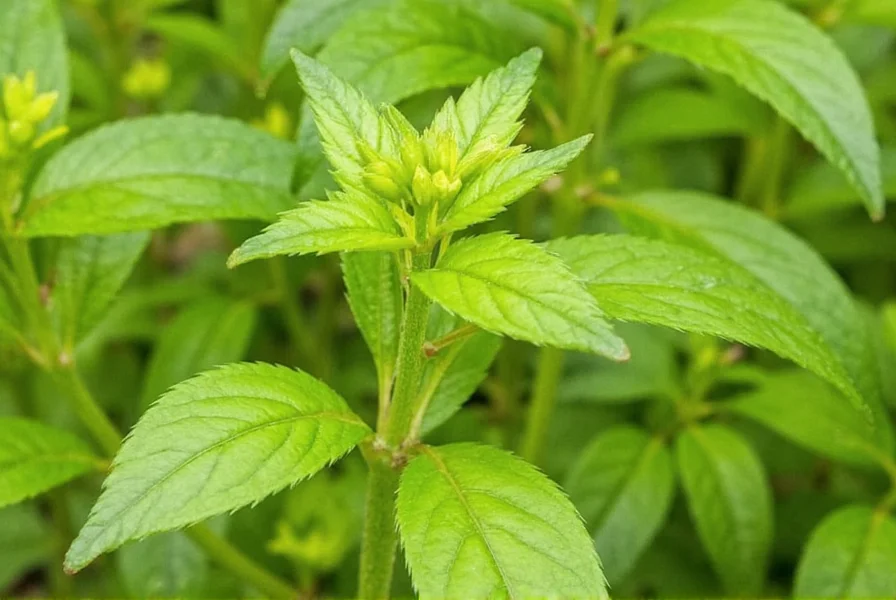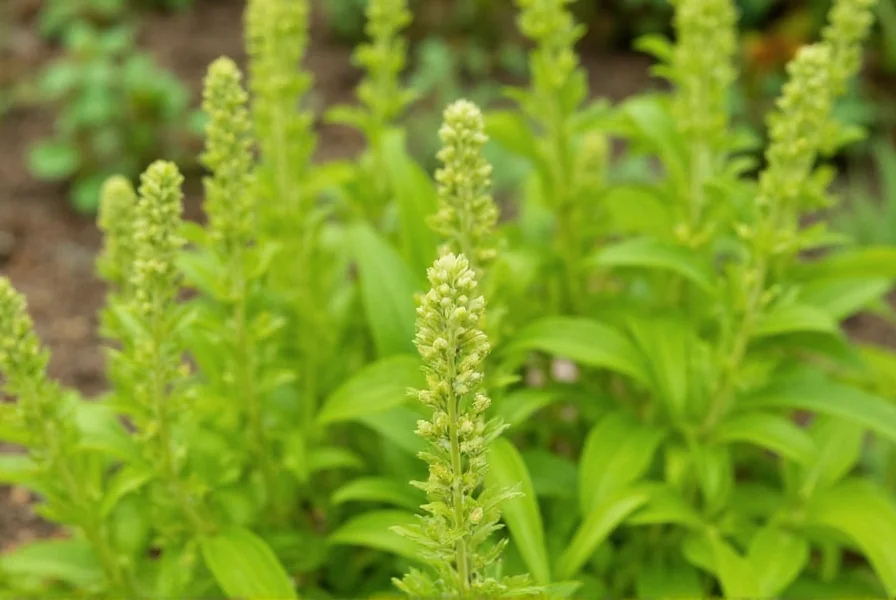The mustard plant encompasses several species in the Brassicaceae family, primarily Brassica juncea (brown mustard), Brassica nigra (black mustard), and Sinapis alba (white/yellow mustard). These fast-growing annuals produce seeds used globally for culinary mustard, while their leaves, flowers, and stems serve as nutritious greens. Mustard plants thrive in temperate climates, reach maturity in 80-95 days, and offer significant agricultural benefits as cover crops that suppress weeds and improve soil health.
Mustard plants have nourished civilizations for millennia, evolving from wild Mediterranean species into versatile crops cultivated across six continents. Today, they represent one of the world's most economically important condiment crops while simultaneously serving ecological functions in sustainable farming systems. Understanding their biology and applications reveals why these pungent plants remain indispensable to both kitchen and field.
Mustard Plant Varieties and Characteristics
Three primary species dominate global mustard production, each with distinct properties that determine their culinary and agricultural applications. Recognizing these differences helps gardeners and farmers select appropriate varieties for specific purposes.
| Variety | Scientific Name | Seed Color | Heat Level | Primary Uses |
|---|---|---|---|---|
| White/Yellow Mustard | Sinapis alba | Pale yellow | Mild | American-style mustard, pickling, salad dressings |
| Brown Mustard | Brassica juncea | Brown to black | Medium-Hot | Dijon mustard, Indian cuisine, cover cropping |
| Black Mustard | Brassica nigra | Dark black | Hottest | Traditional European mustards, medicinal applications |
White mustard (Sinapis alba) grows 2-4 feet tall with light yellow flowers and mild-flavored seeds ideal for classic yellow mustard. Brown mustard (Brassica juncea), sometimes called Indian mustard, features broader leaves often consumed as greens (known as gai choi in Chinese cuisine) and produces the pungent seeds used in Dijon and spicy brown mustards. Black mustard (Brassica nigra), though less commonly cultivated commercially today due to harvesting difficulties, delivers the most intense heat and traditional flavor profile.

Growing Mustard Plants Successfully
Mustard plants thrive in cool-season conditions, making them ideal spring or fall crops in most temperate regions. Their rapid growth cycle—typically 80-95 days from seed to harvest—allows multiple plantings within a single growing season. Successful cultivation requires attention to specific environmental factors and planting techniques.
For optimal growth, plant mustard seeds in well-draining soil with pH between 6.0-7.5 after the last spring frost or 6-8 weeks before first fall frost. Sow seeds ¼ inch deep and 1 inch apart in rows spaced 18-24 inches apart. Maintain consistent moisture during germination, which occurs within 7-10 days at soil temperatures of 45-85°F. Thin seedlings to 6-12 inches apart once they reach 2 inches tall to prevent overcrowding.
Mustard plants require approximately 1-1.5 inches of water weekly. They grow best with moderate nitrogen levels—excessive fertilizer promotes leaf growth at the expense of seed production. Most varieties tolerate light frosts but bolt (go to seed prematurely) when temperatures exceed 80°F. To extend the harvest period in warmer climates, provide afternoon shade or plant heat-tolerant varieties like 'Florida Broadleaf'.
Culinary Applications Beyond the Condiment
While most consumers associate mustard plants exclusively with the prepared condiment, their culinary versatility extends far beyond the familiar yellow squeeze bottle. Every part of the plant offers distinctive flavors and nutritional benefits that chefs and home cooks increasingly incorporate into diverse dishes.
Mustard greens—the young leaves of Brassica juncea varieties—provide a peppery alternative to spinach or kale. Popular in Southern US cuisine, these nutrient-dense greens contain more calcium than milk by weight and deliver substantial vitamins A, C, and K. Sautéed with garlic and a splash of vinegar, they make a flavorful side dish. The unopened flower buds and嫩 pods can be pickled like capers or stir-fried as vegetable delicacies.
For mustard preparation, the enzymatic reaction between crushed seeds and liquid creates that characteristic pungency. White mustard seeds contain sinigrin, which produces milder heat, while black and brown varieties contain higher levels of myrosinase enzymes that generate more intense pungency when mixed with cold liquids. Traditional stone-ground mustard制作方法 preserves more seed texture and complex flavor compared to commercial emulsified versions.
Agricultural Benefits as Cover Crops
Modern sustainable farming increasingly utilizes mustard plants as biofumigants and soil improvers. When incorporated into soil as green manure, certain mustard varieties release glucosinolates that suppress nematodes, fungi, and weeds through natural biochemical processes—a practice known as biofumigation.
Farmers typically plant mustard cover crops in late summer or early fall, allowing 60-90 days of growth before incorporating the biomass into soil. The optimal incorporation stage occurs at early flowering when glucosinolate concentrations peak. As the plant material decomposes, it releases compounds that reduce soil-borne pathogens while adding organic matter. Research from the University of California shows mustard cover crops can reduce root-knot nematode populations by up to 80% when managed properly.
Additionally, mustard's extensive root system breaks up soil compaction and scavenges residual nitrogen, preventing leaching during winter months. When used in crop rotation, mustard helps disrupt pest cycles for subsequent vegetable plantings. Organic farmers particularly value these properties as alternatives to synthetic soil fumigants.
Medicinal Properties and Historical Significance
Historical records indicate mustard's medicinal use dates to ancient Egypt, where it treated respiratory conditions and joint pain. Ayurvedic medicine has employed mustard seeds for centuries to improve digestion and circulation. Modern research validates several traditional applications while uncovering new potential benefits.
Studies published in the Journal of Agricultural and Food Chemistry identify allyl isothiocyanate in mustard seeds as a potent anti-inflammatory compound. Research from the University of Illinois demonstrates that mustard seed extracts inhibit COX-2 enzymes similarly to some pharmaceutical anti-inflammatories. Traditional mustard plasters—linen cloths coated with mustard flour paste—continue to provide relief for chest congestion through counterirritant effects that increase blood flow to affected areas.
Nutritionally, mustard seeds deliver selenium, magnesium, and omega-3 fatty acids. Their high antioxidant content may contribute to cardiovascular protection, while emerging research suggests potential anticancer properties from glucosinolate derivatives. However, individuals with thyroid conditions should consume mustard in moderation due to goitrogenic compounds that may interfere with iodine absorption.
Practical Growing Tips for Home Gardeners
Home gardeners can successfully cultivate mustard plants in containers or garden beds with minimal equipment. For container growing, select pots at least 12 inches deep with drainage holes, filled with quality potting mix. Plant 8-10 seeds per container, thinning to 3-4 strongest plants after germination.
Succession planting every 2-3 weeks ensures continuous harvest of tender leaves for salads. Harvest outer leaves when 4-6 inches long, leaving the central growing point intact for continued production. For seed production, allow plants to mature fully, monitoring pods for dryness before harvesting. Place harvested seed pods in paper bags to finish drying, then thresh by rubbing pods between palms.
Companion planting with mustard offers mutual benefits—marigolds deter aphids while mustard repels cabbage worms from nearby brassicas. Avoid planting mustard after other brassica family members (cabbage, broccoli, kale) to prevent disease buildup. Instead, follow mustard with nitrogen-hungry crops like corn or tomatoes that benefit from residual nutrients.
How long does it take for mustard plants to mature?
Most mustard varieties reach maturity in 80-95 days from planting. Leaf varieties can be harvested as early as 20-30 days for baby greens, while seed production requires the full growing season. Brown mustard typically matures slightly faster than black mustard varieties.
Can you grow mustard plants indoors year-round?
Yes, mustard greens grow well indoors with proper lighting. Use containers at least 6 inches deep with potting mix, and provide 6-8 hours of direct sunlight or equivalent artificial lighting. Maintain temperatures between 60-70°F and harvest outer leaves when 4-6 inches long for continuous production.
What causes mustard plants to bolt prematurely?
High temperatures above 80°F, insufficient water, or day lengths exceeding 14 hours trigger premature bolting in mustard plants. To prevent bolting, plant during cooler seasons, maintain consistent soil moisture, and choose bolt-resistant varieties like 'Southern Giant Curled' for warmer climates.
How do you store harvested mustard seeds properly?
Completely dry mustard seeds in a single layer for 1-2 weeks, then store in airtight glass containers away from light and heat. Properly stored seeds maintain viability for 2-3 years and flavor for 1-2 years. Refrigeration extends storage life but requires防潮 packaging to prevent moisture absorption.
Are mustard plants deer resistant?
Mustard plants generally exhibit moderate deer resistance due to their pungent compounds. While not completely deer-proof, they're less frequently damaged than many garden vegetables. For better protection in high-deer areas, combine mustard planting with physical barriers or companion planting with strongly scented herbs like rosemary.











 浙公网安备
33010002000092号
浙公网安备
33010002000092号 浙B2-20120091-4
浙B2-20120091-4